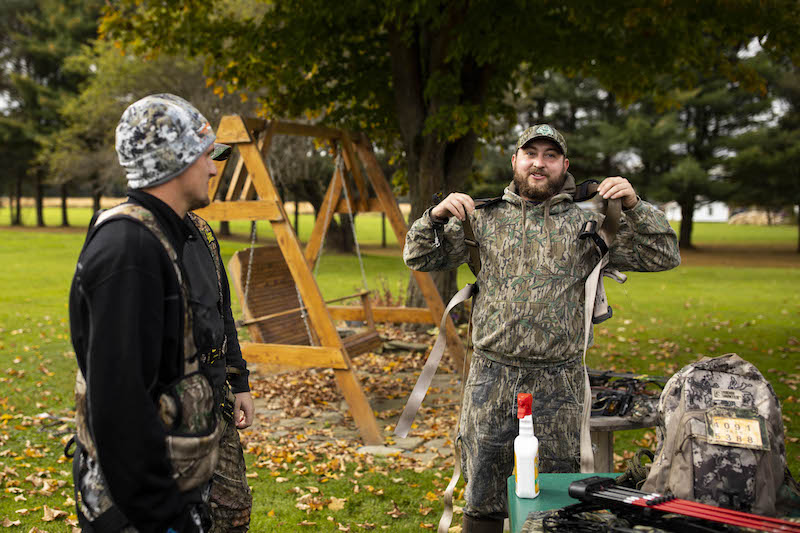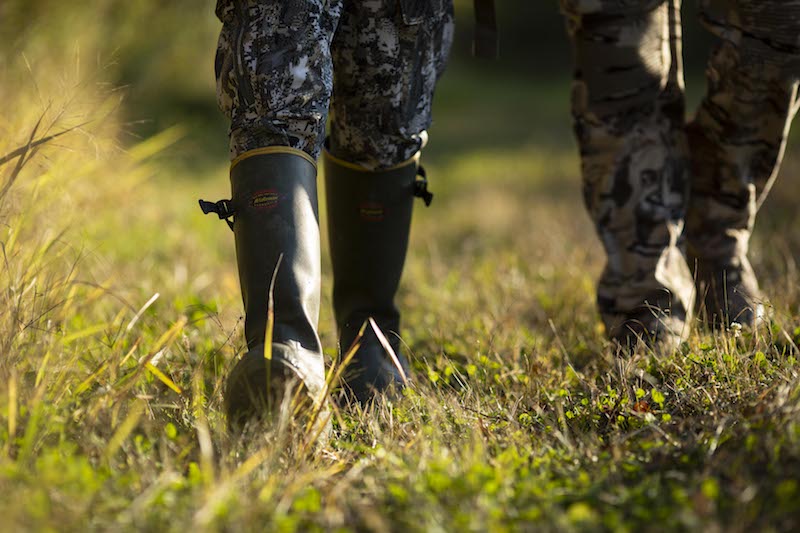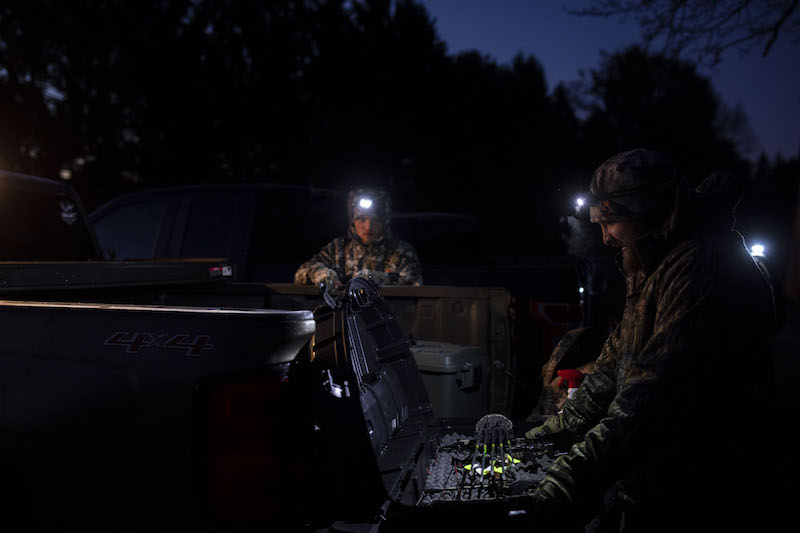What do you need to start bowhunting? You can pack your garage with gear, and many bowhunters do, but it’s not necessary. With just some basic gear, you can go hunting and succeed. In this article, we’ll review bowhunting’s essential gear.
First, you need a bow that fits you. It must be set to a bowhunting draw weight you can handle, and set up with the necessary accessories. You also need arrows, field points for practicing, and broadheads for hunting. Buy your bowhunting gear from an archery store, where archery pros have the technical expertise and knowledge of local hunting options to outfit you properly.

Choose a backpack that fits you well and will distribute weight properly. Photo Credit: ATA
A bowhunting backpack must meet the demands of areas you hunt. Bowhunters who pursue white-tailed deer can get by with a small daypack of 1,200 to 2,000 cubic inches to carry snacks, water and hunting gear.
If you hunt Western states, a quality backpack is essential. Backpacks come in many sizes for various loads, and their frames often adjust to match your torso. A properly fitted backpack carries heavy loads that comfortably distribute weight to your hips. That’s especially important for packing meat out of the mountains. Because quality backpacks require fitting, buy from a store where an experienced clerk/hunter can help you test and choose the right size and model.
A field-dressing kit includes latex gloves, a sharp knife, sharpener and, for mountain hunts, a bone saw. If you’ve never field dressed an animal, print field-dressing instructions and stash them in your kit. If you plan to butcher your kill once home, you’ll need a vacuum sealer or freezer paper to preserve your meat in a freezer. Many bowhunters buy an extra freezer to store game meat.

Comfortable and lasting footwear is a hunting essential. Photo Credit: ATA
Sturdy, quality broken-in boots fit your feet and protect them in any weather or terrain. Dry, warm, blister-free feet keep you hunting hard and long. Choose boots based on expected weather and hunting locations. Western hunts require rugged boots that hold your feet and ankles firmly for stability and to protect your toes during steep descents. Boot sizing can vary, so visit a reputable store and try several pairs before buying. If you hunt in warm climates, boots must be breathable. If you hunt wetlands and marshes, choose quality calf-high rubber boots. And if you’re hunting cold regions, buy insulated boots, especially if you’ll sit for hours on treestands or inside ground blinds.
Proper fit is critical for bowhunting clothes. When you release the bowstring, it must not strike baggy clothing that ruins your shot. Clothes must be practical and comfortable, so buy them from a store where you can try them on before buying.
As with boots, hunting clothes must match your hunting conditions. Early-autumn hunts in warm temperatures require lightweight clothing that wicks moisture. Cold conditions require layering systems that include a base layer, insulation layer, and outer shell so you can regulate your temperature. Obviously, warm hats, gloves and socks are vital for cold-weather hunting.
When bowhunting whitetail, most hunters find an area deer use and wait for them to appear. To stay hidden, many bowhunters use treestands, an elevated platform that gives a commanding view that’s above the deer’s usual sight line. Bowhunting’s critical moment is drawing your bow undetected, because deer flee if they see any movement. Bowhunters using treestands should wear a safety harness, which secures you to the tree to prevent falls. Helpful treestand accessories include a bow hanger, and pull rope for raising and lowering your bow and other gear.
If you’re more comfortable on the ground, a blind offers great concealment by putting camouflaged walls between you and the deer, with small screened openings to look and shoot through. You can shoot through the mesh without disturbing your arrow’s flight, but take a test shot or two through the mesh so you can shoot with confidence. Ground blinds set up easily, and pop-up models sold at archery shops are light and portable. They also put you at eye-level with deer, which is a cool experience.

Headlamps are a great tool to keep you hands-free when hunting at night. Photo Credit: ATA
Even with a well-prepared entry trail, you’ll need a light to help you see before dawn and after dusk. Headlamps are excellent lights that strap to your head, freeing both hands for pushing aside branches, and carrying your bow and other gear. Hands-free lighting also makes it safer to climb into treestands and field dress game in darkness. Standard flashlights are also good options, especially for backup lighting.
Many bowhunters consider wind indicators essential gear. Keep one handy for monitoring wind direction, which helps you stay downwind to fool an animal’s nose.
The equipment we’ve discussed is general, and varies by region. Western hunts, for example, differ greatly between the Great Plains and Rocky Mountains. For specific gear advice where you hunt, visit an archery shop. If heading to the West, look up an archery shop near your hunting area for advice, and then stop in when you arrive. These stores employ savvy bowhunters who provide great bowhunting advice.